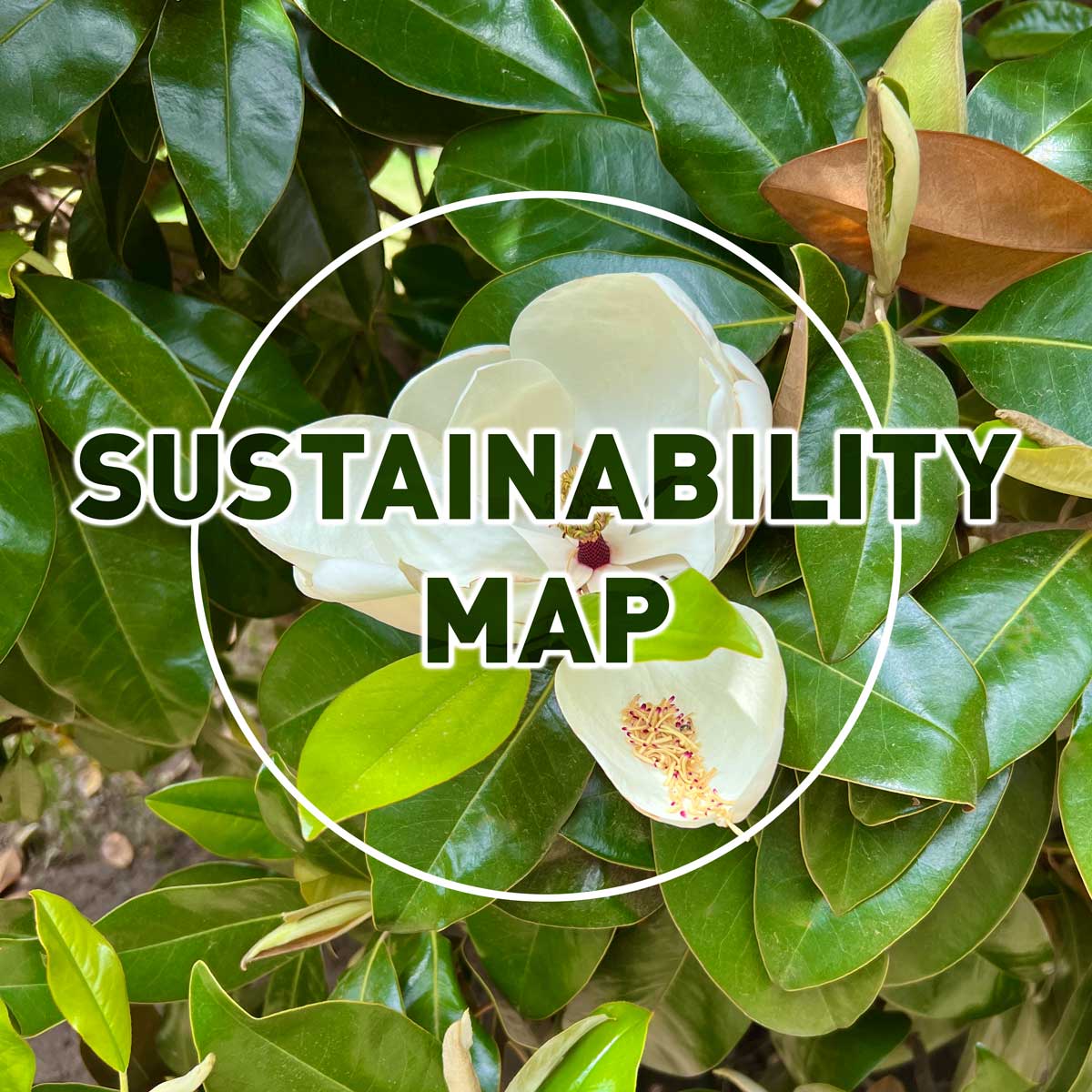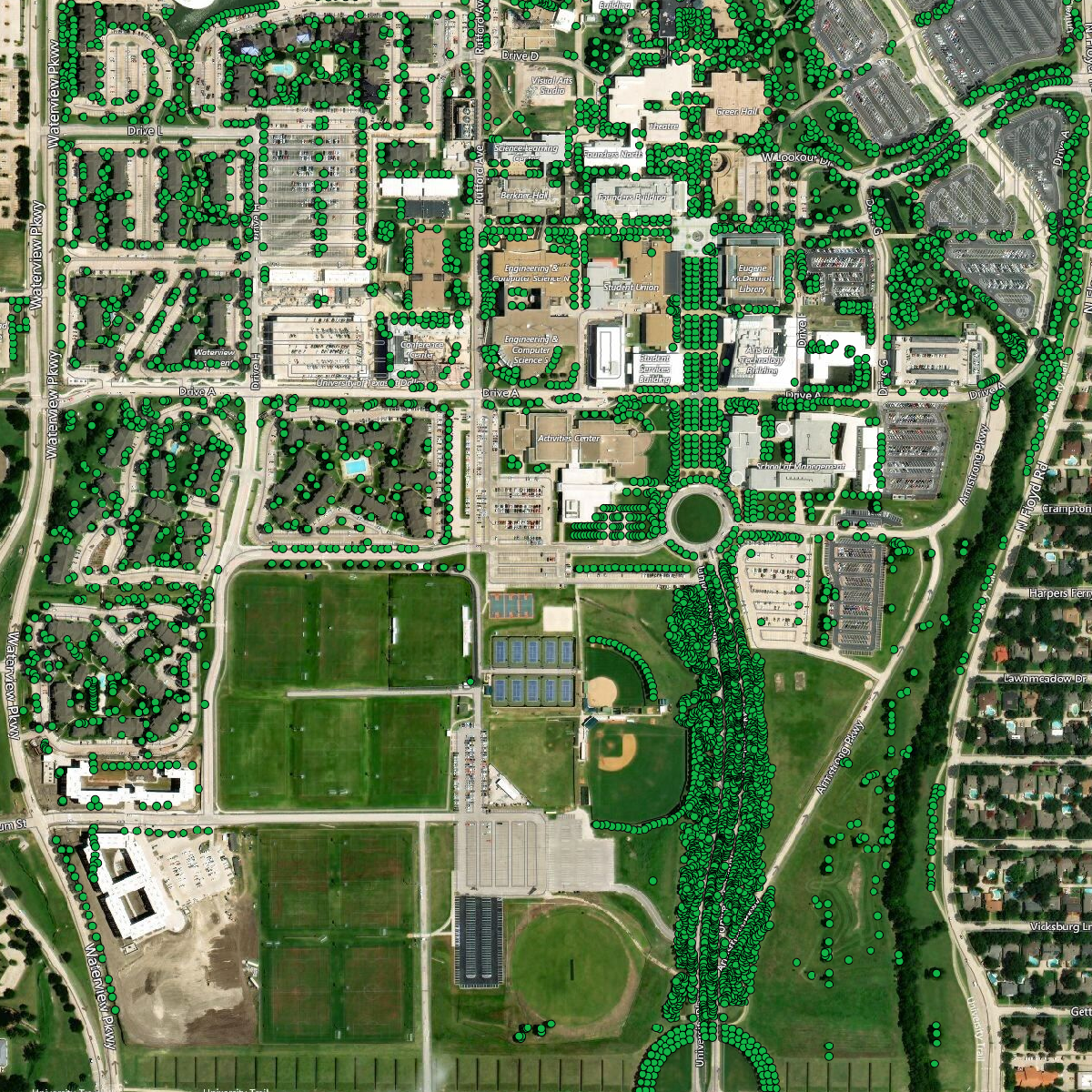As part of the Campus Landscape Enhancement Project, an
Urban Forest (PDF [Portable Document Format File] ) was established along University Drive. The forest is a densely planted area, reminiscent
of a Texas creek bed. More than 5,000 trees and shrubs were planted, many of them native
to Texas. The varieties include Afghan Pines, Bur Oaks, Caddo Maples, Cedar Elms,
Chinquapin Oaks, Magnolias, Pond Cypress and Shumard Oaks. The Urban Forest is set in
a natural riparian corridor running through campus.
Cottonwood Creek also runs through campus. The West Fork of Cottonwood Creek runs along
the west side of campus, through University Village. It ultimately joins other waterways
at White Rock Lake, part of the Trinity River watershed.
Irrigation
UT Dallas is a campus that is comprised of buildings, greenspace, and natural landscaping features that includes many diverse species of flora and fauna. Through efficient and strategically planned watering, our Facilities Management team ensures that our campus landscape is healthy and visually appealing. Efficiency in campus irrigation minimizes water loss and waste. At any time, if you see a broken sprinkler on-campus, please contact Facilities Management.
Watch 2019 Viva Volunteers celebrate Texas Arbor Day by planting red oaks at the
VCB [Visitor Center and University Bookstore] entrance!
Can’t play the video? Download it in
MPEG-4 (MP4 [Moving Picture Experts Group MPEG-4 Video] ),
Ogg Theora (OGV [Ogg Theora Video] ), or
WebM (WEBM [WebM Video] ) format.
Pollinator Habitat
UT Dallas sits in Texas’ Blackland Prairie. The Blackland Prairie region is a strip of dark, rich soil encompassing much of Dallas and following the I-35 corridor. It’s known for its black, fertile soil which is very suitable for farming and grazing. The soil was so desirable that the Blackland Prairie is now one of the most endangered ecoregions in the United States with less than 1% of original prairie remaining. Facilities Management has established No-Mow Zones in several locations across campus to encourage native prairie grasses and flowering plants to grow and provide habitat to native pollinators.
Pocket Prairie
A spider climbs up the stalk of a Texas Plume, Ipomopsis rubra.
The UT Dallas restored pocket prairie, established in 2023, is another representation of the Blackland Prairie ecoregion on campus. This restoration project is a living, breathing ecosystem supporting native pollinators and other wildlife, as well as serving as an educational ambassador for the preservation and restoration of the Blackland Prairie. You can see live updates of the flora and fauna observed at the prairie on iNaturalist.
A Firewheel, Gaillardia pulchella.
Community Garden
The UT Dallas Community Garden program provides Comets with the opportunity to enjoy
the benefits of natural gardening and community greening. The garden was established
in 2006 with an idea from the McDermott Scholars program and a grant from the UT Dallas
Alumni Development Fund. Students, staff, faculty and alumni are all invited to host
garden plots. Participants should contact the Office of Student Volunteerism to inquire
about joining the Community Garden.








